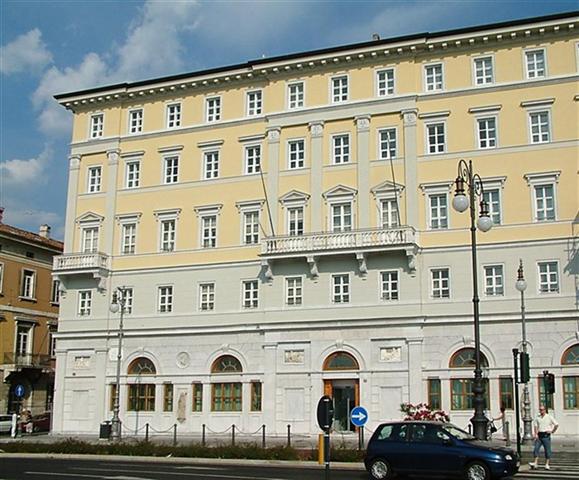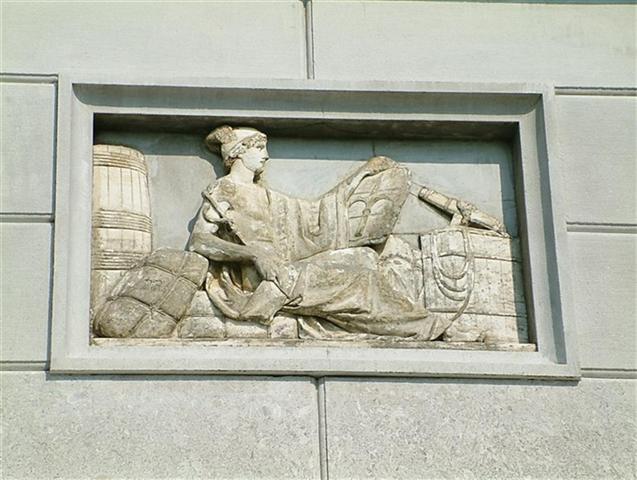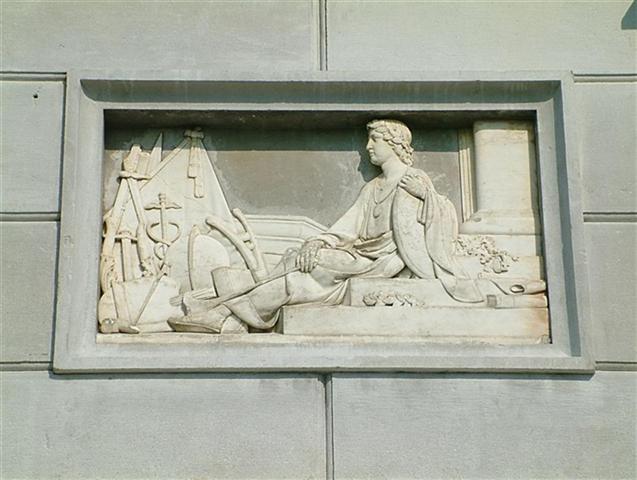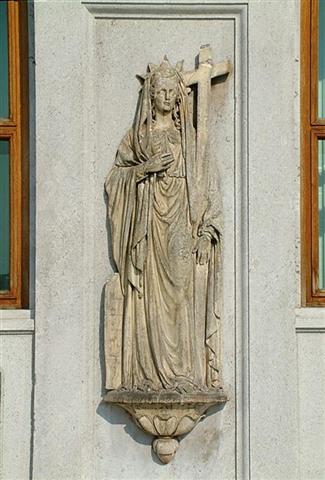Palazzo del Hotel de la Ville (prima metà ottocento)
riva III Novembre 11
Arch. Giovanni Degasperi
The city in the first half of the nineteenth century experienced a period of great economic expansion: industries, imports, exports and investments developed, markets opened, many hotels were built. The Metternich hotel, later called Hotel de la Ville, now the headquarters of the Banca Popolare di Novara, was for many years the most important in the city.
Designed by Giovanni Degasperi (as shown in the project preserved in the municipal archive) in forms of "noble simplicity and calm grandeur", as the father of classical culture would say, Winckelmann, however, presents some compositional concerns in the design and construction of the architectural order .
The facade is divided by the architect into five parts, one central and two lateral, formed respectively by four and two pilasters in giant order with Corinthian capitals and two intermediate without colonnade marked by windows with platbands resting on shelves on the lower floor and simple the upper one.
The two lateral pilasters close the corner of the building continuing also in the side walls; in this way the pilaster turns into a corner pillar.
The rusticated facade on the ground floor of the Hotel de la Ville has strong eclectic tensions. The order has the same subdivision of the upper parts in Tuscan order and the two intermediate parts (the simplest in the upper score) are divided into the horizontal half and loaded with full and empty spaces, profiles and decorations. Four pillars, always in Tuscan order, support an architrave on which semicircular lunettes open.
The destination as a hotel leads the architect to a characterized and airy configuration, open between exterior and interior, as if his task had been to make the use of a public space discreet, or to close, not hiding the interior, a loggia.
Pietro Zandomeneghi, son of Luigi, a Venetian sculptor, worked on the decorative rounds that represent parts of the world. Later the munificence of the cav. Revoltella, the new owner, added the bas-relief carved rectangles, representing Honor, Industry, Navigation, Reflection, Religion, Constancy, Charity and Commerce. These bas-reliefs are the work of the sculptors Giuseppe Moscotto and Giovanni Depaul (around 1860).
A plaque placed on the left of the facade in 1913, on the occasion of the centenary of Giuseppe Verdi's birth, recalls that in 1850 the musician wrote the symphony of Stiffelio which was staged, for the first time, at the Teatro Comunale on November 16 of the same year.














